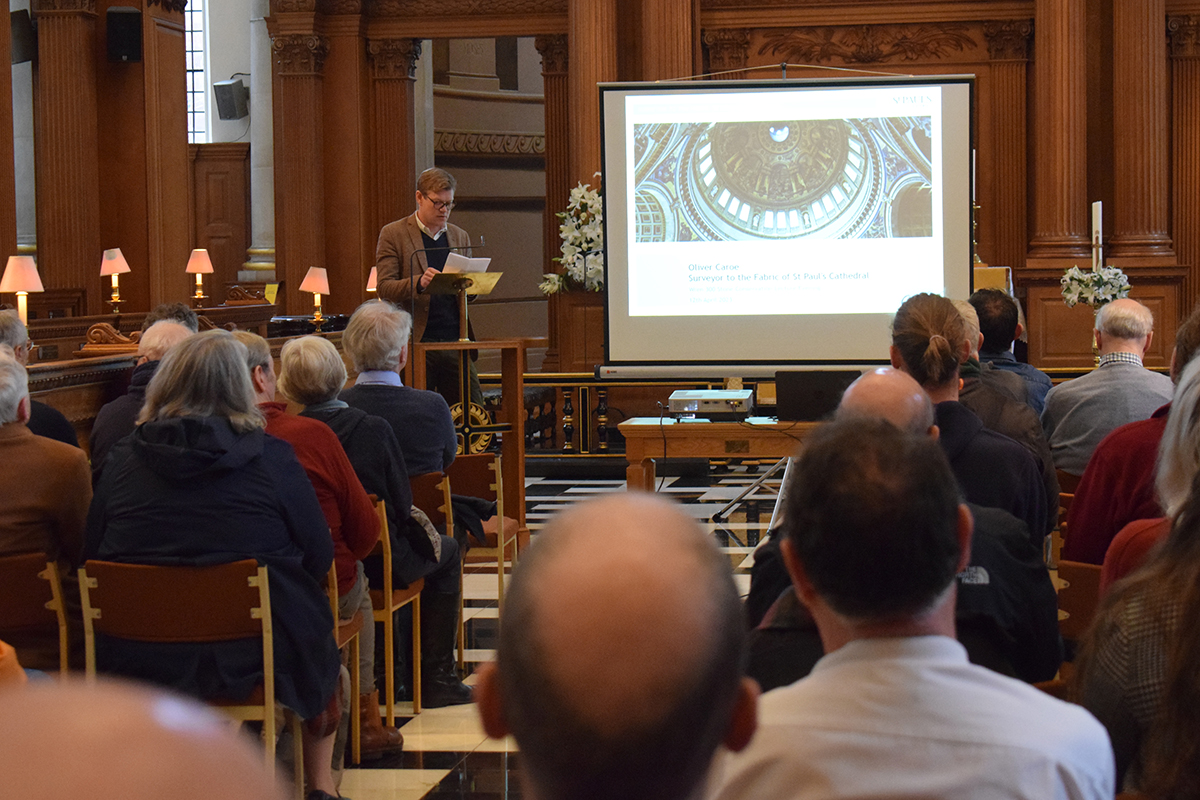Cliveden Conservation focuses on stonework to open the Square Mile Churches' WREN300 workshops
The 51 churches in the City of London rebuilt by Sir Christopher Wren after the Great Fire in 1666 are this year commemorating the 300th anniversary of Sir Christopher’s death.
Part of the activities in what is being called WREN300 is a series of workshops and presentations about the conservation skills used in the maintenance of the churches, which include Wren’s masterpiece, St Paul’s Cathedral.
The first of the workshops, involving the stonework of the churches, were presented last week at St Bride’s Church in Fleet Street by stone and conservation specialist Cliveden Conservation, which is among the companies that help to keep the churches in such good condition.
The first workshop on 12 April focused on stone cleaning, showing how the superheated water and laser products of, respectively, Restorative Techniques and Terra Measurement can be used to clean stonework.
There were also demonstrations of the HD3D digital surveys of the churches being carried out as part of the WREN300 programme by Terra Measurement using photogrammetry and point cloud laser technology, creating millimetre accurate digital twins of the churches.
In the evening, Oliver Caroe, one of the country’s foremost ecclesiastical architects who is the Surveyor of the Fabric of St Paul’s Cathedral, discussed the stonework renovation and alterations at St Paul’s, including the new accessibility ramps built by Stonewest.
Presentations about the broader use of stone in sustainable ways, particularly for new-build, were given by stonemason extraordinaire Pierre Bidaud of The Stonemasonry Company and engineer Steve Webb from Webb Yates.
They provided ‘A walk through the New Stone Age’, offering solutions in stone construction, notably with the use of post-tensioning, in the context of today’s social and environmental challenges, not least global warming. The evening rounded off with an opportunity for the audience to talk to the presenters informally over glasses of wine.
The following day, visitors were able to have a go at lettercutting, marking out and lime pointing during a stonemasonry experience day, again at St Bride’s, with Cliveden explaining about mortar repairs, indent repairs, repointing, mortar and stone analysis.
These and future workshops covering the conservation of metal, glass, wood, and plaster/paint are free, but the churches ask anyone wishing to attend to register, so they know how many people to expect.
There are various other events taking place as part of WREN300, including a Wrenathon of choirs from across the City of London and beyond in a 12-day festival in June taking place in several of the Square Mile Churches.
Details of all the events and booking for them (some are not free) can be found on the Square Mile Churches’ website.
Below are some photographs from Cliveden's events.
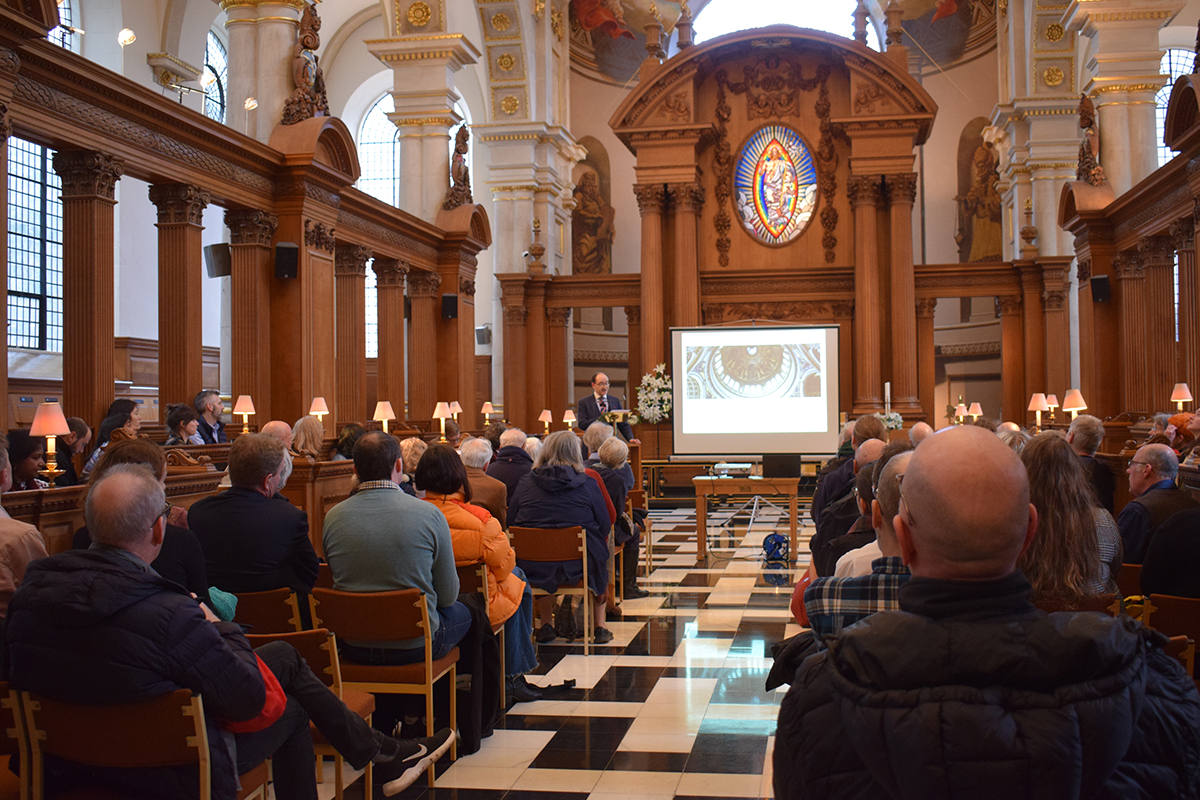
Robin Turner, the Head Verger at St Bride's, welcomed the guests who came to hear the stone lecture at the church.
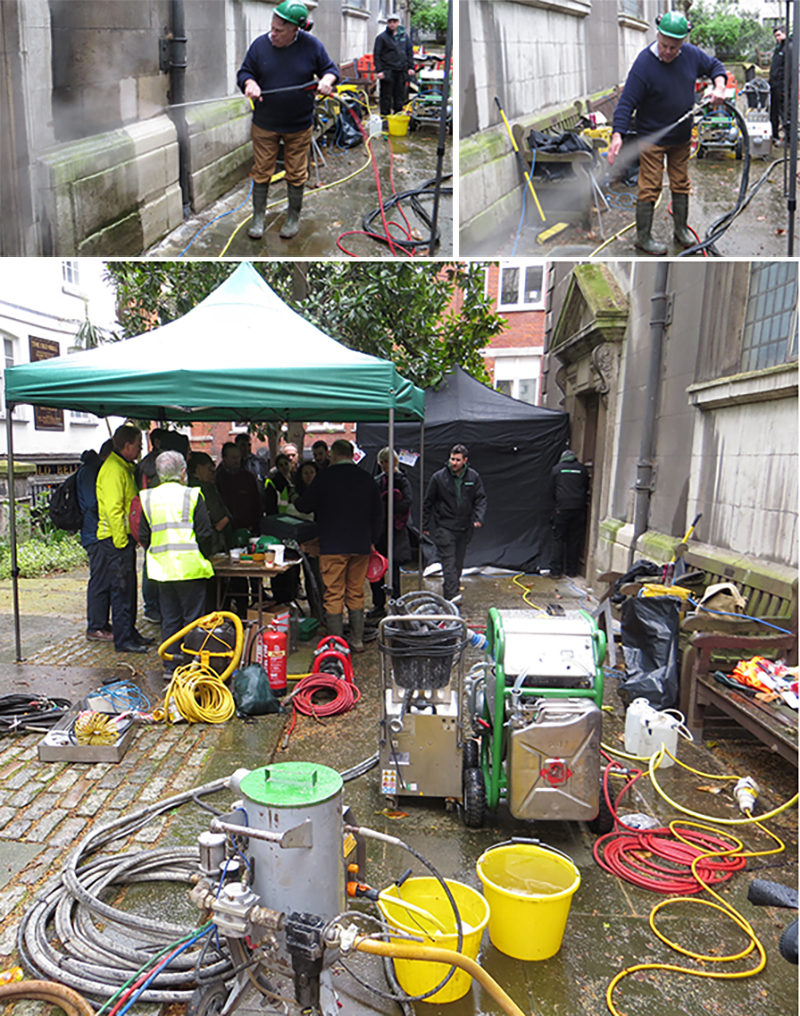
Restorative Techniques Director Jamie Fairchild demonstrated the use of poultices, ThermaTech superheated water and VorTech gentle abrasive cleaning.
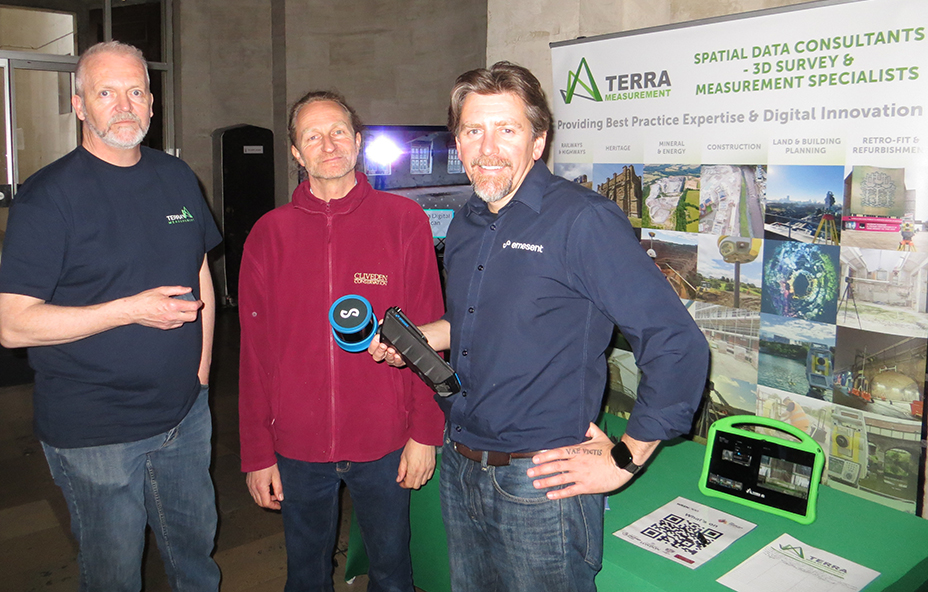
David Jagger from Terra Measurement, which is producing the digital twins of Wren's Churches, with Ben Newman from Cliveden Conservation and Dr Jeremy Sofonia from Emesent in Australia, which makes the Lidar laser measuring devices used by Terra Measurement.
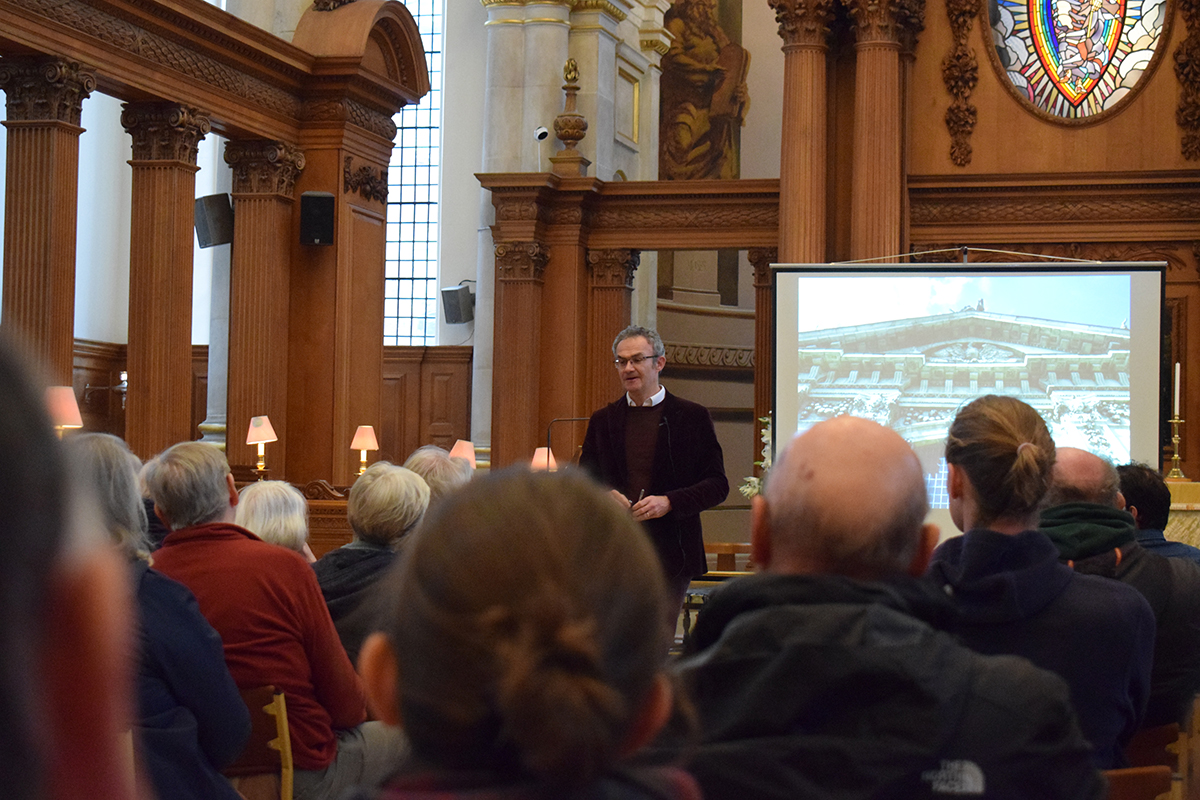
Oliver Caroe, one of the country’s foremost ecclesiastical architects who is the Surveyor of the Fabric of St Paul’s Cathedral, spoke about the stonework renovation and alterations at St Paul’s, including the new accessibility ramps built by Stonewest.
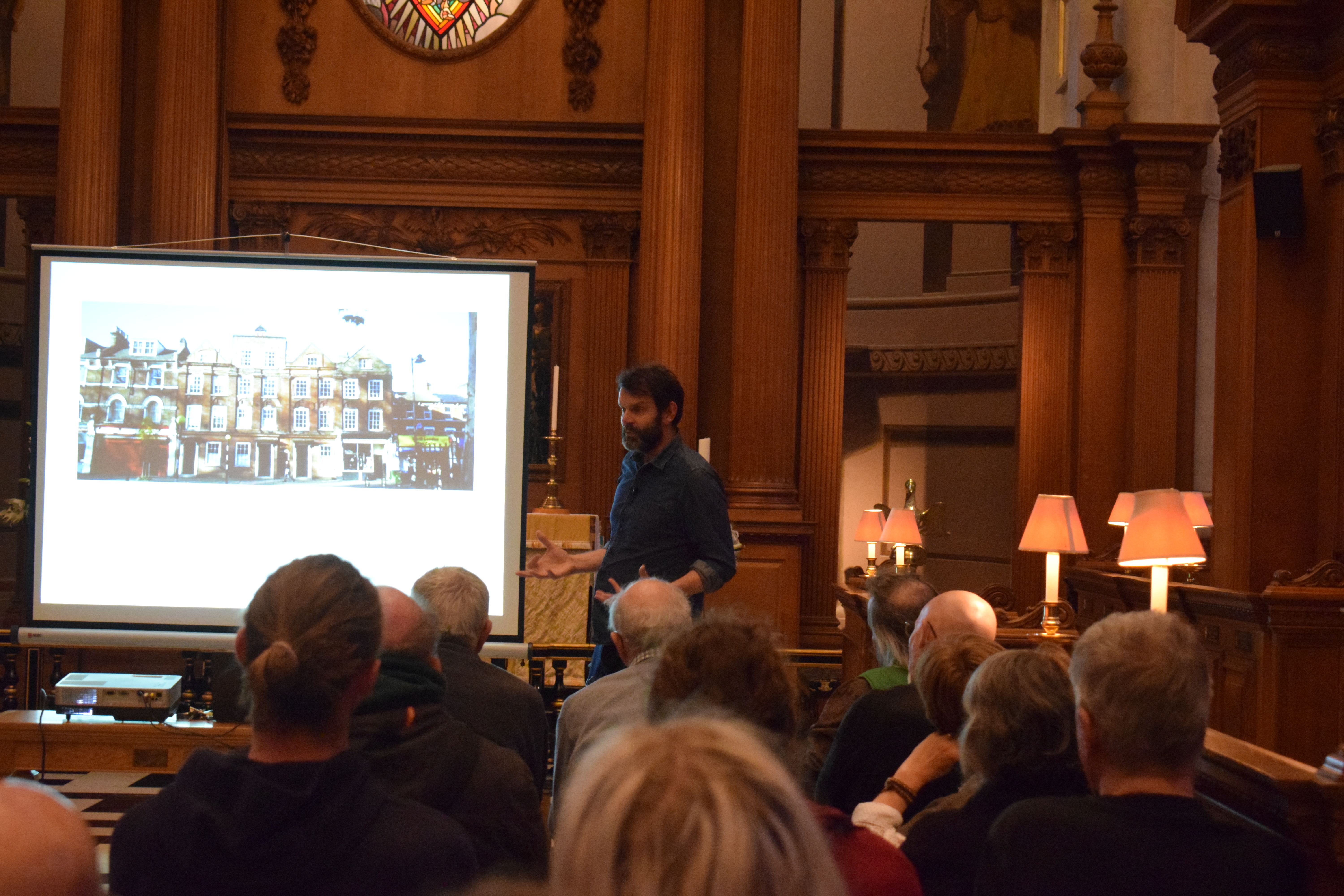
Steve Webb of engineers Webb Yates spoke about the sustainability and low carbon footprint of stone. He said, referring to the making of concrete and steel: "If there's a bloody great fire in a factory to make a product it's probably high carbon." He said stone was greener than wood as a building material because in the area it takes to grow one tree there are many metres of stone in the ground below. He said: "Weetabix does more harm to the environment than stone."
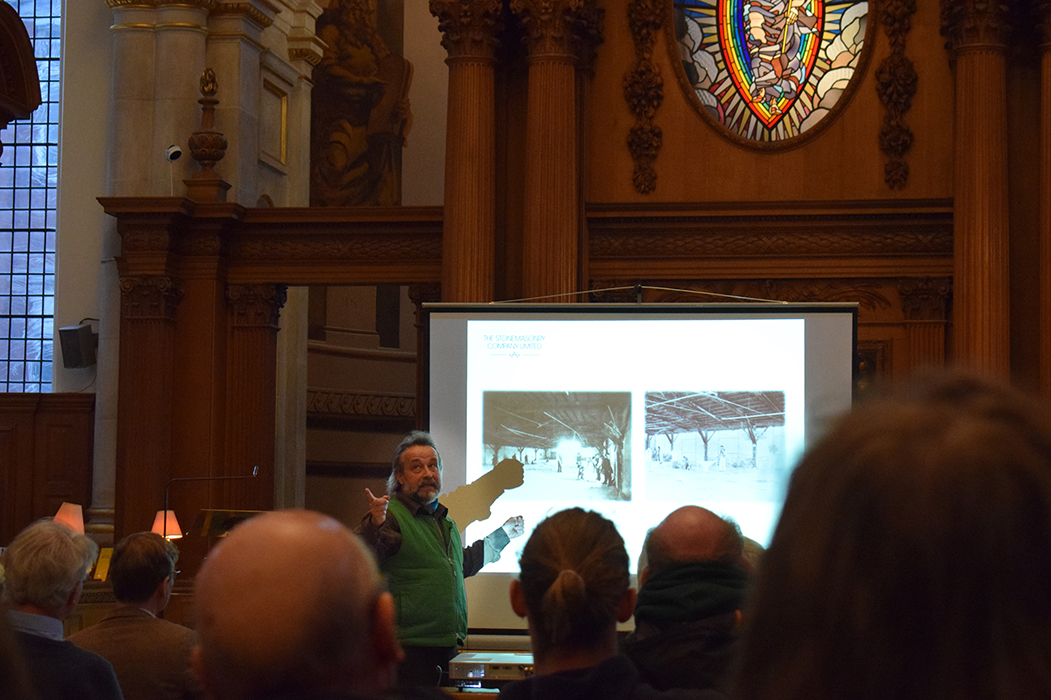
Stonemason Pierre Bidaud of The Stonemasonry Company explained how the company uses post-tensioned stone columns and staircases to create the company's hugely impressive structural elements, manufactured offsite for rapid installation onsite.

